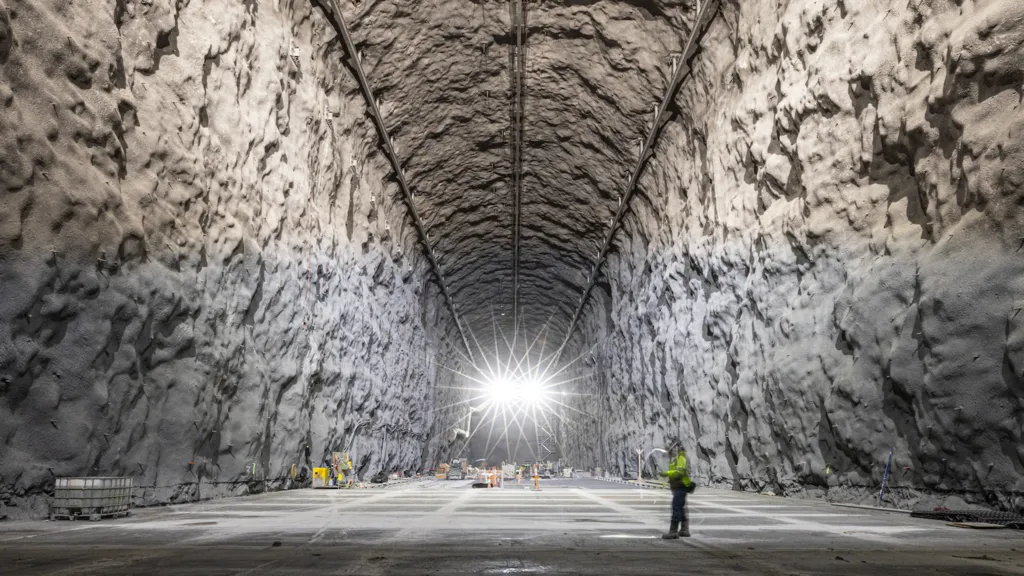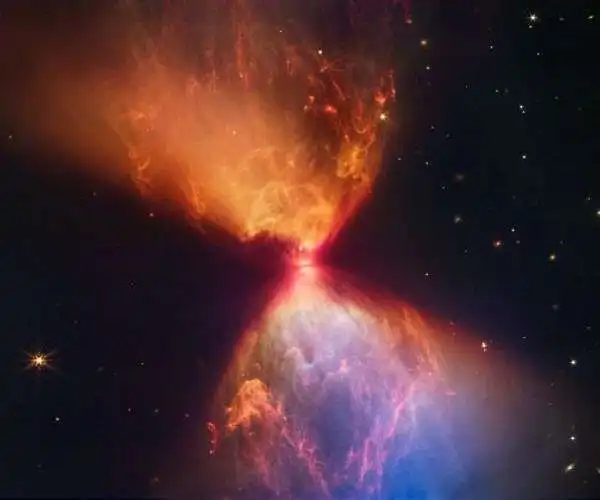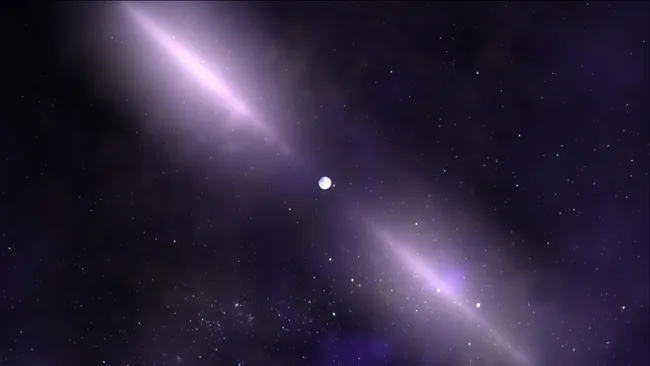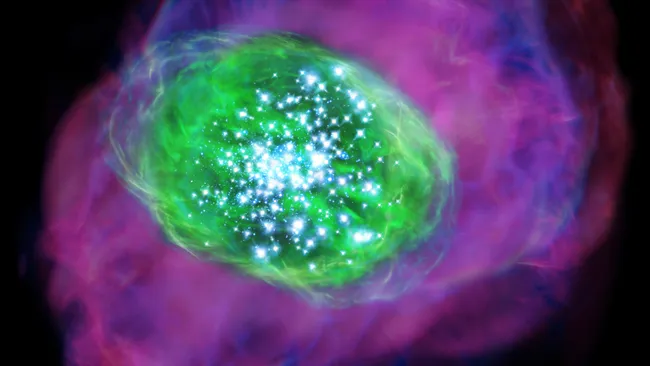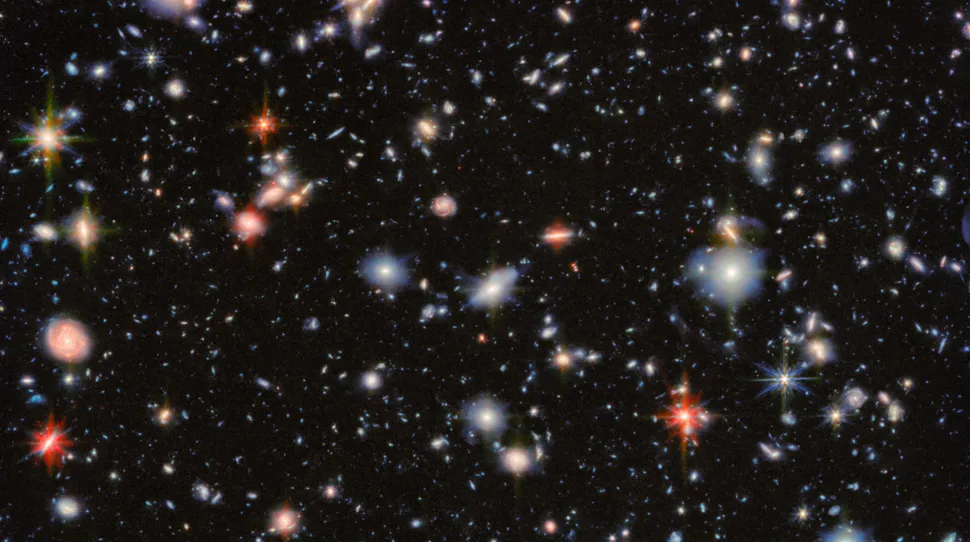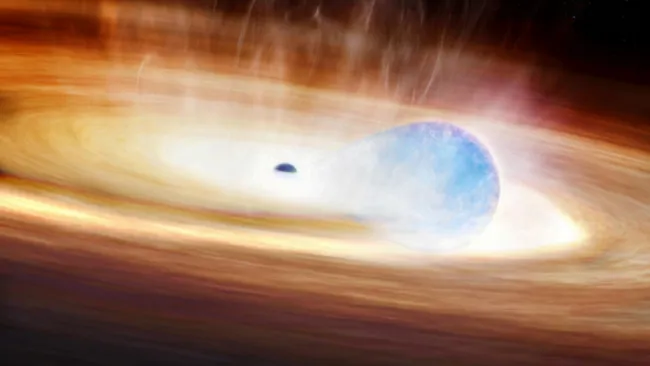High in the forested hills of South Dakota, inside a vast underground laboratory, scientists are working to answer one of the greatest scientific mysteries: why does the Universe exist at all?
This global effort includes a U.S.-led team and a Japanese team racing toward the same goal — and the Japanese scientists are currently ahead.
The prevailing theory of the Universe’s origin cannot fully explain why we see stars, planets, and galaxies today. To address this, both teams are building detectors designed to observe neutrinos, ghostly subatomic particles that might hold the key.
The DUNE Experiment: A Cathedral to Science
In the U.S., the search is centered deep underground at the Deep Underground Neutrino Experiment (DUNE). The setup spans 1,500 meters below the surface in South Dakota’s Sanford Underground Research Facility (SURF). It consists of three immense caverns, so massive that bulldozers working inside look like toy models by comparison.
Dr. Jaret Heise, the science director at SURF, has overseen the construction of this monumental project for nearly a decade. He describes the chambers as “cathedrals to science”.
“We are poised to build the detector that will change our understanding of the Universe,” Dr. Heise says, “with instruments deployed by more than 1,400 scientists from 35 countries who are eager to answer why we exist.”
The Matter vs Antimatter Mystery
According to current theories, the Big Bang produced equal parts matter and antimatter. These should have annihilated one another completely, leaving only energy behind. Yet, somehow, matter survived — and we are the proof.
Physicists now believe the answer lies in studying neutrinos and their antimatter counterparts, anti-neutrinos. These particles subtly change form as they travel — a phenomenon called neutrino oscillation.
DUNE scientists will send beams of neutrinos and anti-neutrinos from Illinois to the South Dakota detectors, over 800 miles (1,300 km) underground. They hope to discover whether neutrinos and anti-neutrinos change differently during their journey. If they do, this asymmetry could explain why matter triumphed over antimatter in the early Universe.
Dr. Kate Shaw of Sussex University, one of the scientists involved, calls the project “transformative” for both our understanding of the Universe and humanity’s place in it.
“It’s really exciting that we’re at a point where we have the technology, engineering, and software to confront these big questions,” she said.
Japan’s Hyper-K: A Rival Temple of Science
On the other side of the world, scientists in Japan are developing Hyper-Kamiokande (Hyper-K) — a successor to the famous Super-K neutrino detector. The setup gleams with gold-plated photodetectors and resembles a shrine to discovery, mirroring DUNE’s cathedral-like caverns.
Hyper-K is also a major international collaboration. It’s expected to begin operations within the next three years, years ahead of DUNE.
Dr. Mark Scott of Imperial College London believes this head start gives Hyper-K an advantage:
“We switch on earlier, and we have a larger detector — we should get results faster than DUNE,” he said. “Of course, I’d love to be the first!”
Not Just a Race, But a Shared Quest
However, Dr. Linda Cremonesi from Queen Mary University of London, a researcher on the DUNE team, cautions that Hyper-K might not have all the tools to fully answer the big question.
“There is an element of a race,” she said, “but Hyper-K doesn’t yet have all the ingredients needed to tell whether neutrinos and anti-neutrinos truly behave differently.”
Though competition fuels progress, both experiments will complement each other. Running side by side, they could offer a more complete picture of the Universe’s origins.
But for now, the mystery remains. The first scientific results are still years away — and the question of why there’s something rather than nothing remains one of the greatest puzzles in science.

